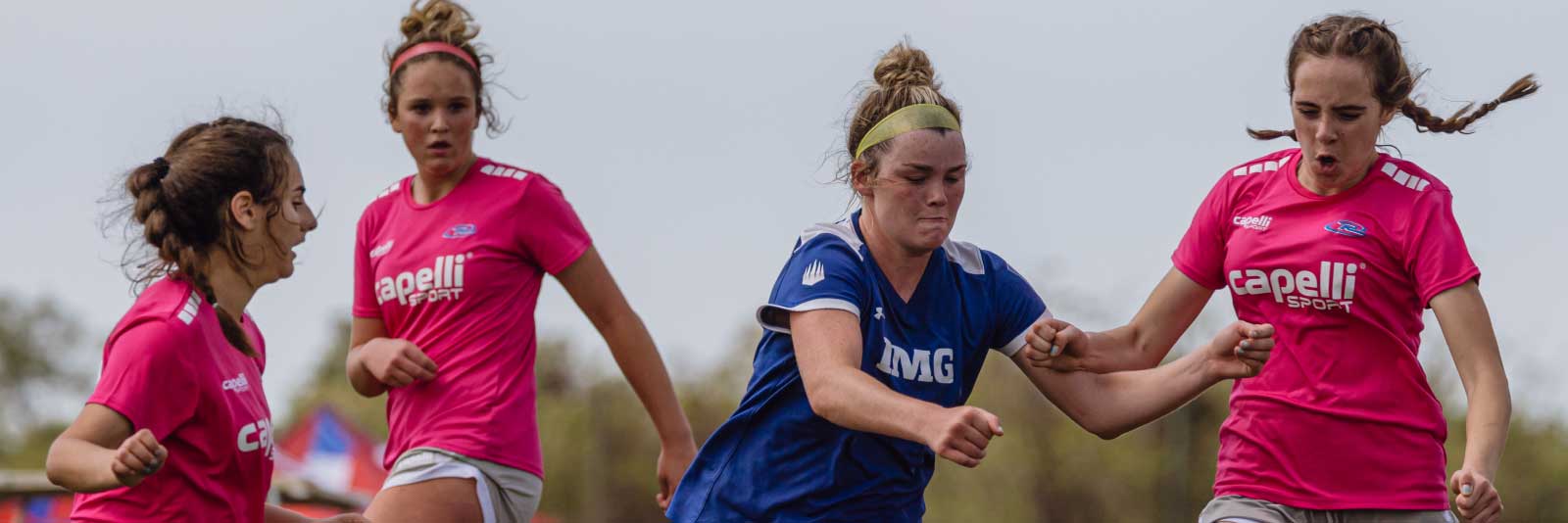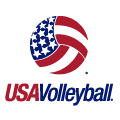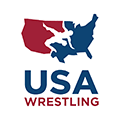2023–24 NCAA Women’s Soccer Recruiting Rules and Calendar

When can women’s soccer coaches reach out to athletes? Generally speaking, almost all forms of contact are allowed starting June 15 after an athlete’s sophomore year, including verbal offers, emails, calls, texts and recruiting letters. For some divisions, coaches can reach out earlier. In this section, we break down the women’s soccer recruiting rules and calendar for the NCAA and NAIA.
READ MORE: Student-athletes can now earn money from their name, image and likeness (NIL).
Quick Links
How to use the NCAA women’s soccer recruiting rules and calendar
The NCAA has set up certain rules around when—and how—college coaches can contact potential recruits. One goal in creating these rules was to curb early recruiting. However, athletes and coaches have found ways to establish contact well before the timeline established by the NCAA.
In fact, in NCSA’s survey of D1 women’s soccer coaches, 7% reported that they began evaluating talent before 9th grade, 45% began evaluating talent in 9th grade, and 47% began in 10th grade. Simply put, athletes who are serious about playing for a D1 women’s soccer program need to get the recruitment process started early and reach out to coaches freshman year of high school—or even earlier.
Insider tip: While student-athletes and D1 and D2 college coaches cannot communicate—via email, phone or text—until June 15 after the athlete’s sophomore year, coaches can begin looking at athletes much earlier. Even if coaches can’t contact those recruits, they are going to look at a student-athlete’s video and grades, and potentially reach out to their club and/or high school coaches to make sure the student-athlete is someone they want to recruit. College coaches are not going to wait until June 15 after a prospect’s sophomore year to begin evaluating them. Make sure your profile is up to date with your latest videos and transcripts and update it regularly so coaches can see your progress.
The importance of June 15th for soccer recruiting
For soccer recruits, NCAA D1 and D2 coaches can’t reach out to athletes until after June 15 of their sophomore year, but this doesn’t mean recruits should wait until this date to contact coaches. Former NCAA and NAIA coaches Lindsey Boldt and Luis Cortell share the importance of being proactive before and during the contact period that begins on June 15.
How do coaches contact women’s soccer players before the NCAA recruiting rules allow it?
One of the most important dates for an athlete to remember is June 15 after their sophomore year. Before this date, any off-campus communication between a coach and a recruit is prohibited according to NCAA rules.
During this time, club or high school coaches will play a key role in how a college coach can contact an athlete. College coaches may initiate contact with young athletes by working through their club or high school coach.
While club or high school coaches can relay information between the athlete and college coach, these conversations cannot be related to recruiting. College coaches can only express interest in an athlete.
College coaches also use camps and clinics as an opportunity to evaluate prospective recruits. However, college coaches and athletes may only communicate at camps as long as it’s after June 15 after the athlete’s sophomore year.
Complying with NCAA recruiting rules and calendar for women’s soccer
The included NCAA women’s soccer recruiting rules and 2023–24 NCAA recruiting calendar can help families make sure they’re on track in the recruiting process. The NCAA women’s soccer recruiting rules show student-athletes the types of communication to expect from college coaches based on their high school year. The NCAA recruiting calendar for women’s soccer outlines the specific recruiting periods throughout the year, which regulate how coaches can communicate with athletes throughout the school year.
It’s important to remember that the coaches—not the recruits—are responsible for complying with the NCAA women’s soccer recruiting rules. In other words, student-athletes don’t need to worry about sitting down and memorizing the exact dates coaches can start contacting them. For more information about the NCAA women’s soccer recruiting rules, check out the 2023–2024 Guide for the College-bound Student-athlete.
Division 1 NCAA recruiting rules for women’s soccer
These rules break down when athletes can receive specific forms of communication from coaches based on their year in high school:
Sophomore year
- June 15: June 15 after sophomore year, coaches can start conducting off-campus communication and extend verbal offers. Coaches may contact athletes via all forms of private electronic correspondence, including text messages, instant messages, direct messages and emails, as well as all recruiting materials. Coaches may also start calling athletes at this point.
Off-campus communication may also take place at camps and clinics, however coaches cannot communicate with athletes specifically about recruiting.
Junior year
- August 1: August 1 before junior year, athletes may also begin taking official or unofficial campus visits. Athletic departments can start participating in an athlete’s recruiting process, helping to schedule on-campus visits, events or meetings with coaches.
Division 2 NCAA recruiting rules for women’s soccer
The NCAA women’s soccer recruiting rules for Division 2 schools are slightly more relaxed than those for Division 1, with most contact starting in the summer of the athlete’s junior year:
- Any time: Athletes can receive brochures for camps, questionnaires, NCAA materials and non-athletic recruiting publications.
- June 15 after sophomore year: Coaches may begin calling athletes. They can also conduct off-campus communications with athletes and/or their parents. At this time, athletes may start taking official visits.
Division 3 NCAA recruiting rules for women’s soccer
D3 women’s soccer colleges have the most relaxed recruiting rules among NCAA division levels:
- Recruiting materials: Athletes can receive recruiting materials at any time.
- Telephone calls: There is no limit on when college coaches can call athletes.
- Off-campus contact: After the athlete’s sophomore year, college coaches may begin to conduct off-campus communications.
- Official visits: Athletes can begin taking official visits after January 1 of their junior year.
NAIA women’s soccer recruiting rules
The NAIA has fewer recruiting rules than the NCAA. NAIA coaches can contact student-athletes anytime during high school. NAIA recruiting tends to start a little later than NCAA D1 recruiting and closer to the D2 recruiting period, as NAIA coaches see which athletes just missed the cut to compete at a D1 school. They also spend more time making sure that their school is the right fit for athletes socially and academically, as well as athletically.
2023–2024 women’s soccer recruiting calendar
Throughout the year, there are certain time periods set forth by the NCAA that regulate the way coaches can recruit athletes at that time. Remember: It’s up to the coach to follow these recruiting rules. However, it’s also important for families to know what to expect from coaches throughout the year. For example, student-athletes want to avoid planning their campus visits during a dead period, as the coach will not be able to meet with them during that time.
Dead periods: Coaches may not have any in-person contact with recruits and/or their parents. In other words, coaches are not allowed to talk to recruits at their college campus, the athlete’s school, an athletic camp or even the grocery store. Athletes and coaches are still allowed to communicate via phone, email, social media and other digital communication channels.
- Division 1: November 6–9, 2023 (Monday through Thursday of the initial week for the signing of the National Letter of Intent).
- Division 1: December 15, 2023 – January 5, 2024.
- Division 2: November 6 (7 a.m.) – 8 (7 a.m.), 2023 (during the 48 hours prior to 7 a.m. on the initial date for the signing of the National Letter of Intent).
Contact period: Outside the above dead periods, most communication between athletes and coaches is fair game after June 15 after an athlete’s sophomore year. Coaches can initiate contact and respond to emails, texts, calls and direct messages from athletes and their parents through any NCAA-approved method. Before June 15 after an athlete’s sophomore year, coaches can be contacted but they cannot respond outside of camp and clinic information. The contact period encompasses any times throughout the calendar year that are not part of the dead period.
















